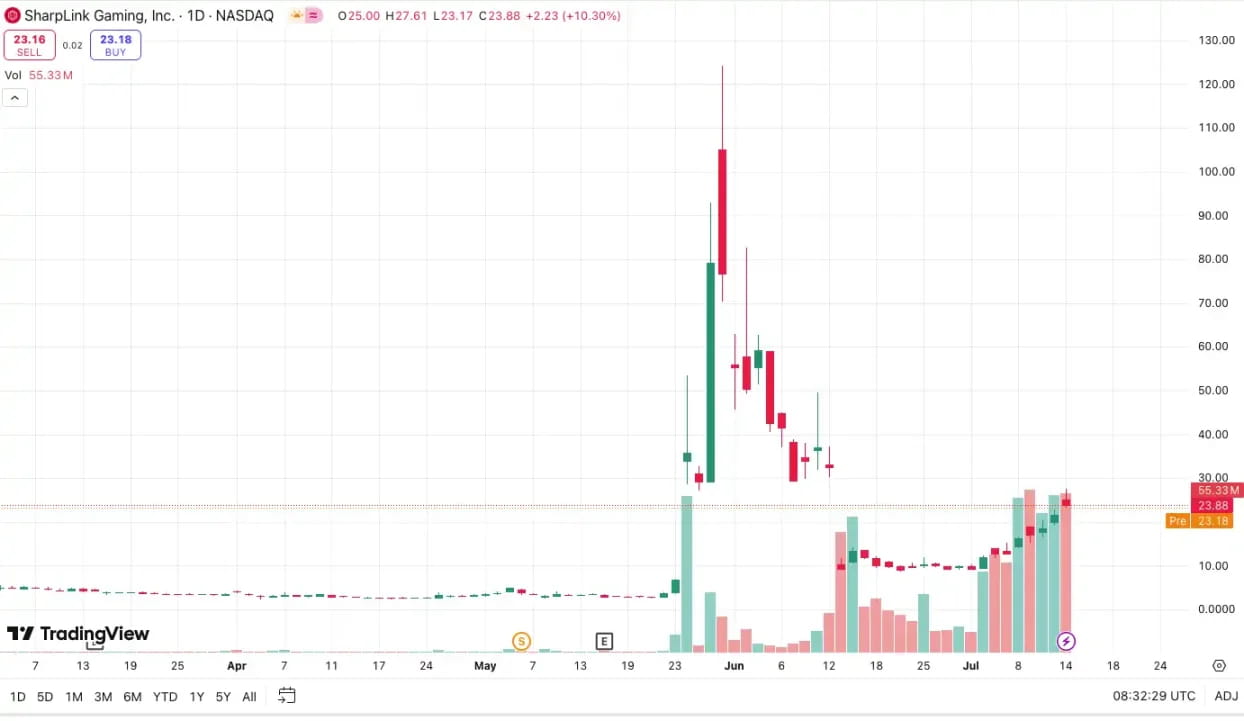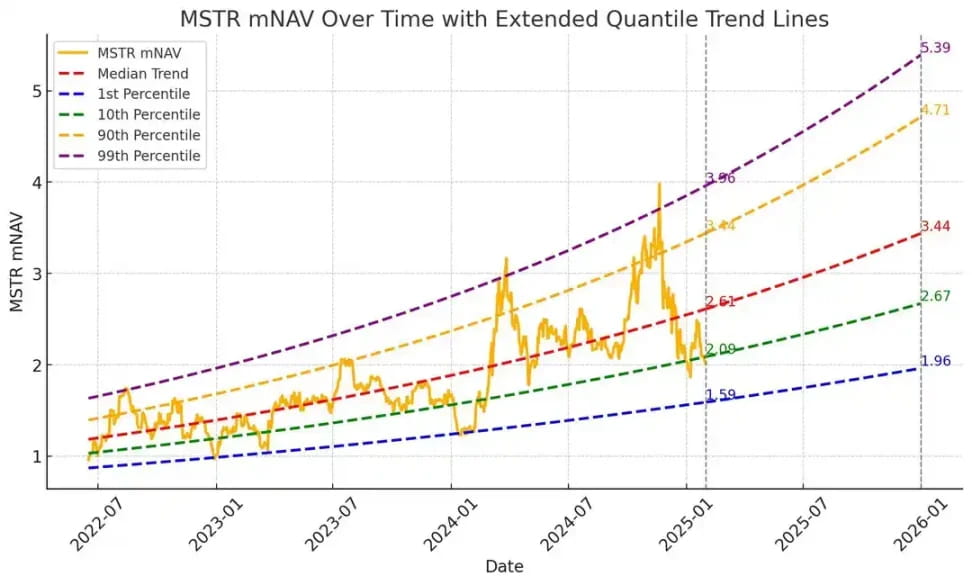Written by: EeeVee
In the past month, Ethereum (ETH) surged from $2,100 to $3,000. During this surge, US companies and mining firms announced the purchase of ETH as their 'strategic reserves', with some mining firms even selling all their BTC to cash in on ETH.
Statistics show that Ethereum strategic reserve companies purchased over 545,000 ETH in the past month, with a total value exceeding $1.6 billion.
SharpLink (SBET), as the first company to use ETH as a strategic reserve, saw its stock price soar from $3 to over $100 after announcing the purchase of ETH, only to drop back to single digits, facing market criticism. Currently, its stock price is back above $20.

Recently, SBET has made a major purchase of nearly 50,000 ETH in just 5 days, surpassing the Ethereum Foundation in total ETH holdings.
Additionally, SBET has staked some of its ETH on-chain to earn staking rewards. As of July 8, its staking position has earned 322 ETH.
Currently, there are mainly 5 US companies using ETH as a 'strategic reserve':
SharpLink Gaming (SBET)
BitMine Immersion Technologies (BMNR)
Bit Digital (BTBT)
Blockchain Technology Consensus Solutions (BTCS)
GameSquare (GAME)
The ETH holdings of each company are as follows:

mNAV is the ratio of total market capitalization to net asset value (NAV), calculated as:

The mNAV of ETH reserve companies is mainly estimated based on their 'total market capitalization' / 'total value of ETH held'.
Is the market experiencing FOMO?
The mNAV data represents the disconnect between the company's market value and its assets, reflecting the market's sentiment premium towards a certain concept or stock. A higher mNAV often indicates heavier market speculation, while a lower mNAV suggests investors are in a relatively rational state regarding a concept or stock.
In terms of the premium rate of BTC reserve companies, as of May 2025, MicroStrategy (MSTR) has a market value approximately 1.78 times its net asset value (mNAV) of Bitcoin, which has fluctuated between 1 and 4.5 times from August 2022 to August 2024.
MSTR's mNAV curve reflects how the sentiment in the crypto market drives the valuations of such companies.

Its peak, such as 4.5 times, usually occurs during BTC bull market cycles and during MSTR's large-scale BTC accumulation, indicating strong investor enthusiasm. A drop to a low point of 1 times corresponds with the bear market and consolidation periods in the crypto market, showing that investors are unwilling to pay a sentiment premium.
mNAV in the range of 2-2.5 represents a relatively neutral investment sentiment and premium.
Using this as a benchmark to assess these 5 Ethereum strategic reserve companies: SBET and BTCS are currently in this range, while BMNR and BTBT's mNAVs are slightly too high.
It is important to note that BMNR and BTBT were originally mining companies that may still hold other assets besides ETH, the value of which has not yet been accounted for.
Overall, the current valuation range of Ethereum strategic reserve stocks remains relatively rational, and market enthusiasm has not yet reached FOMO.
If Ethereum rises to $5,000, how many times can these companies multiply?
If the ETH price continues to rise to $5,000 in the coming months, assuming these companies keep their total ETH holdings unchanged and do not issue new shares, we can estimate based on a more rational premium (mNAV = 2), at that time the stock price and potential increase would be:

Investors should be aware that mNAV = 2 is a relatively neutral premium rate. If ETH indeed rises to $5,000, the market may be willing to pay a higher sentiment premium for these ETH strategic reserve companies.
Also, during this period, the ETH staked by these companies will generate returns, increasing their ETH holdings.
Ethereum value discovery? Why has it suddenly become a darling for institutions?
When these Ethereum strategic reserve companies discuss why they chose ETH, the main reasons mentioned are as follows:
The success of BTC reserve companies like MSTR
ETH staking yield
The potential of ETH in narratives around stablecoins and RWA in the future.
Bit Digital's CEO Sam Tabar is optimistic about replicating MSTR's model on ETH, expressing confidence in ETH rising to $10,000.
‘(Building Ethereum reserves) We are just getting started. This is just a warm-up. Consider how Saylor continuously issues his stocks to acquire BTC, and as BTC keeps rising, he becomes more capable of repeating the whole process.’
Primitive Ventures emphasized the potential of ETH staking yields in their rationale for betting on SBET:
‘ETH has inherent yield capabilities in staking and the DeFi ecosystem, making it a truly productive asset, whereas Bitcoin lacks such mechanisms. SBET is expected to directly leverage ETH's on-chain mechanism for compound growth, achieving real and quantifiable returns for shareholders.’
The CEO of Bitmine Immersion Technologies is more optimistic about ETH's potential in RWA and TradFi narratives, stating in an interview:
‘In my view, the attractiveness of Ethereum lies in it being the first layer blockchain for tokenization of real-world assets. As more and more things in the financial world and real world are tokenized, financial institutions like Goldman Sachs, JPMorgan, Amazon, and Walmart will want to stake Ethereum itself, just as they do with stablecoins. We are doing what these enterprises will do in the future.’
